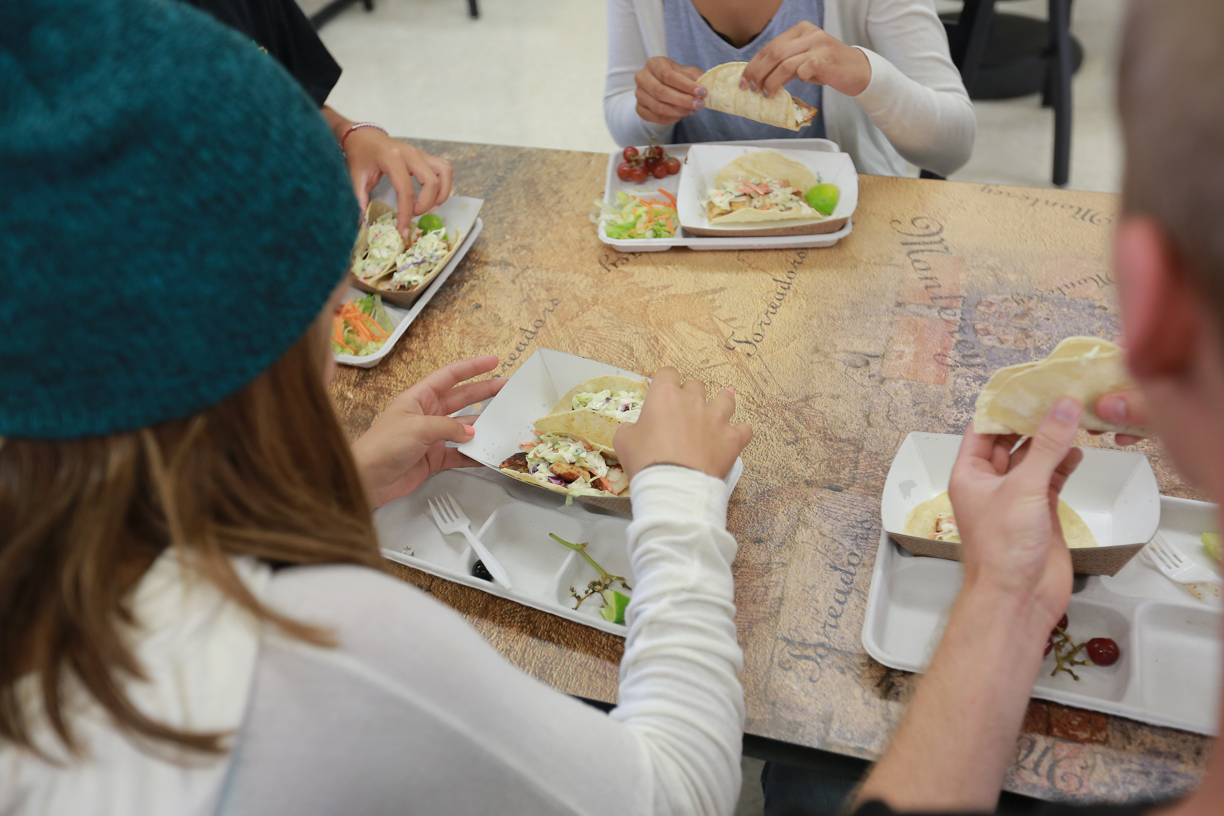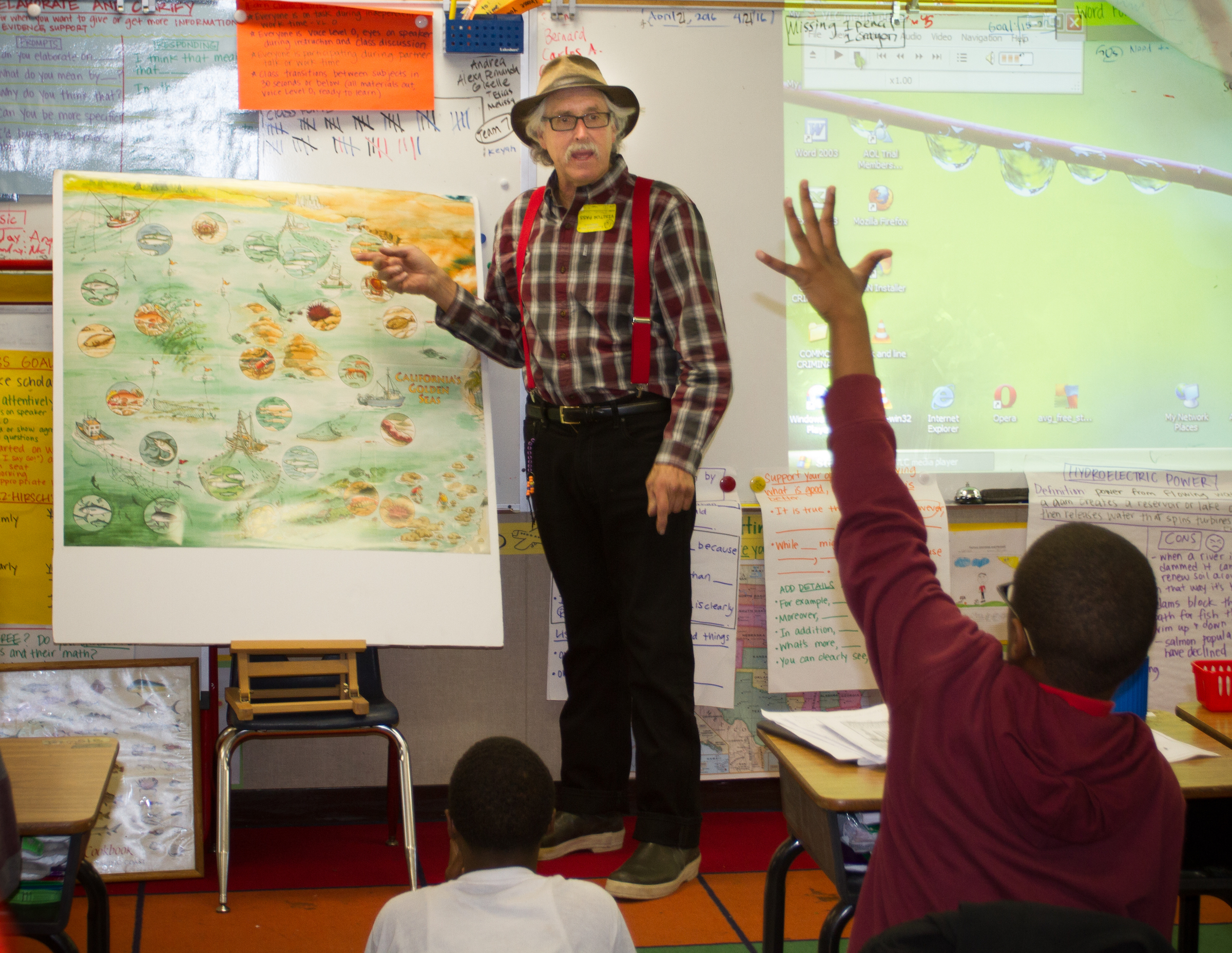Community-supported Fishery Brings Local Seafood to Schools with Bay2Tray Program
Cafeterias conjure up flashbacks of soggy vegetables, mystery meat and consequent shudders of disgust. But a viral 2015 article published by Huffington Post, featuring photos of international school lunches, revealed to Americans that they might be the only ones associating cafeterias with catastrophe. The sautéed shrimp from Spain and local fish from Italy left American kids and adults alike drooling—and a little jealous.
Thanks to Bay2Tray, a program started by community-supported fishery Real Good Fish in 2014, a number of California cafeterias will be serving up meals more reminiscent of Spain’s or Italy’s when the bell rings.
But even more than tastiness, Bay2Tray is concerned with sustainability and local eating, which is what earned it a selective grant of over $95,000 from the US Department of Agriculture’s Farm to School Program. It was one of just 65 projects to be chosen.
To Cindy Long, the Deputy Administrator for Child Nutrition Programs at USDA’s Food and Nutrition Service, the importance of schools serving local lunch food cannot be underscored enough.
“Farm to school projects foster healthy eating habits among America’s school-age children, and local economies are nourished, as well, when schools buy the food they provide from local producers,” Long said in a USDA press release.
In keeping with this belief, Bay2Tray’s ultimate goal is to cultivate a connection between schools and local fishermen by providing students with quality local seafood. Due to this specificness, it’s one of the only programs of its kind.
To succeed in this objective, Bay2Tray purchases fish that would otherwise be tossed out due to lack of market or consumer trend. Its most common commodity: grenadier, a white fish that works well in dishes such as tacos, ceviche or burrito bowls.

A shocking 250,000 pounds of dead grenadier are thrown back into the ocean annually. To combat this waste, Bay2Tray has provided 40,000 pounds of grenadier to schools and visited over 50 classrooms in the three years since its start. But Real Good Fish doesn’t want to stop there.
With the grant money, Real Good Fish hopes to bump up the number of fishermen classroom visits and create virtual fishing tours to foster an understanding of how the food the children eat gets from the farm (or in this case, the bay) to their forks. In addition, the participating schools’ food staffs will be provided with kid-friendly recipes that incorporate seafood as well as culinary training.

Real Good Fish CEO and founder Alan Lovewell believes that through facilitations and, of course, delectable fresh fish, children will learn the value of conservancy.
“With Bay2Tray visceral connections are created between students, their community, and the natural world – improving the chance that they will take stewardship of them,” Lovewell said in a press release.
Nine other projects from California were granted money from the USDA in 2017. Some notable ventures are the Tides Center’s School Food Focus and the Fresno County Economic Opportunities Commission’s FRESH initiative.
Comparable to Bay2Tray’s mission, School Food Focus, headed in San Francisco, sets out to increase school food demand for locally sourced poultry products in the Southeastern and Western regions of the country.
The FRESH initiative emphasizes the importance of local produce in schools through its policy that will establish a set percentage of the Fresno Unified School District’s food budget for locally grown fruits and vegetables as well as through its educational and tasting events.
It comes as no surprise that the country’s newfound and frankly, necessary interest in local and sustainable eating has begun to infiltrate school hallways. And it seems to be for the best, both nutritionally and environmentally.
And the fact that it’s not mystery meat is just the added bonus.


